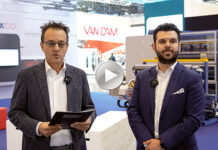FPA, that offers programs that can help make printers and suppliers become more sustainable, presented a webinar about this interesting topic, held by Eduard Boja, Comexi Group Industries, Brand Manager Lamination & Slitting
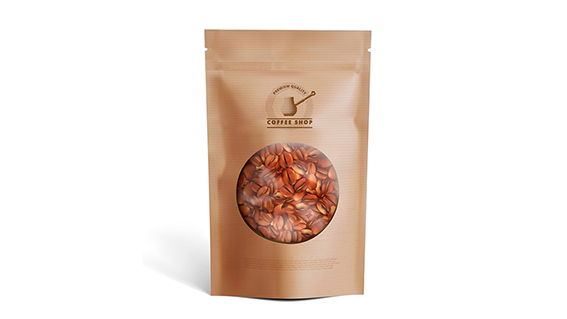 The trend towards sustainable packaging were the main drivers of big brands during 2020. At the same time, the business of food service delivery and, consequently, the single-use packaging have dramatically increased.
The trend towards sustainable packaging were the main drivers of big brands during 2020. At the same time, the business of food service delivery and, consequently, the single-use packaging have dramatically increased.
Eduard Boja went through the main challenge both trends are presenting to packaging converters and big brands. Many trends come and go but there is something which has come to stay, that is easy of use, according to a survey conducted by FPA (Flexible Packaging Association based in USA) there are multiple reasons which lead consumers to believe flexible packaging is a better solution in front of rigids most of which are related to the facilities it presents during its use. FPA commissioned this Brand Value Study to better quantify the impact its members’ packaging technologies have for brand owners. This study considered 2,120 consumers, 304 brand owners, and FPA members, plus the input of secondary research and case studies on packaging innovations and the results are clear: packaging has a positive documented impact on brand value; consumers are willing to pay more for certain product attributes enhanced by flexible packaging and flexible packaging fits the expectations of tomorrow’s consumers. It is easy to store and open and give the possibility to reseal the pack.
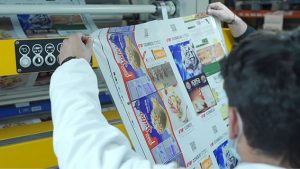 Circular solution is an ubiquitous trend: from food and fashion to electronics and of course packaging, circular thinking – keeping resources in use for as long as possible to extract the maximum value- was one of the biggest drivers before 2020, pushing innovation and disrupting linear business models. Disruption and digitalization are the new drivers for businesses: despite the pressure that sustainability presented, and still does, to many industries, it has now let way to other challenges to conventional business models. Packaging is not an exception and it is changing to satisfy new needs.
Circular solution is an ubiquitous trend: from food and fashion to electronics and of course packaging, circular thinking – keeping resources in use for as long as possible to extract the maximum value- was one of the biggest drivers before 2020, pushing innovation and disrupting linear business models. Disruption and digitalization are the new drivers for businesses: despite the pressure that sustainability presented, and still does, to many industries, it has now let way to other challenges to conventional business models. Packaging is not an exception and it is changing to satisfy new needs.
The mushrooming of delivery services
If there is one sector which can serve as illustration of how packaging is aiding a business to transition into a different business model, this is the food delivery: a research by Statista shows how much food delivery services are expected to grow over the 2021-2024 stretch on a global scale. Revenue in the online food delivery segment is projected to reach US$151,526m in 2021. Revenue is expected to show an annual growth rate (CAGR 2021-2024) of 6.36%, resulting in a projected market volume of US$182,327m by 2024. At global level, most revenue will be generated in China (US$56,936m in 2021).
The new challenges for single use packaging: with this drastic growth of food delivery services, the amount of packaging required to transport, keep warm and protected the food we consume has also increased dramatically. Consequently the future single use packaging must be sustainable.
Biggest trends in the market
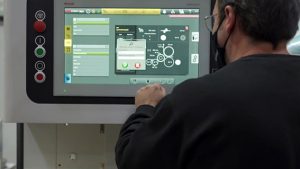 Single material structures are the biggest trend right now, Converters are focusing in developing solutions containing a single resin and the inclusion of recycled content. Technical paper solutions and biodegradable and compostable solutions are important. Barrier coatings are also gaining relevance since they play an important role in the development of both solutions.
Single material structures are the biggest trend right now, Converters are focusing in developing solutions containing a single resin and the inclusion of recycled content. Technical paper solutions and biodegradable and compostable solutions are important. Barrier coatings are also gaining relevance since they play an important role in the development of both solutions.
The use of single material structures presents certain challenges. The challenges they present can be tackled through different methods and technologies such as EB and crosslinking overprint varnishes and many more. Metallization of new generation materials and application of barrier coatings is also possible.
The introduction of paper into certain applications where it has never been present or the substitution of certain polyolefins on top is definitely driving paper applications. Most of it is carried by new water-based coatings which can supply properties and barrier to certain degree depending on the application.
Comexi ML2 to answer market needs
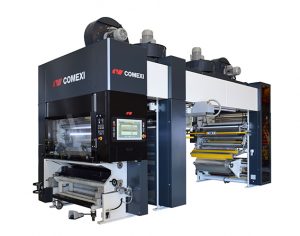 The versatility and productivity of the Comexi ML2 are the reasons for its existence. Its broad range of lamination and coating options offer solutions for all flexible packaging applications like solvent, solventless or water based lamination, matt, shine or holographic effects among many others. Thanks to its ergonomic design, day-by-day operations are performed faster enhancing the production to its limit.
The versatility and productivity of the Comexi ML2 are the reasons for its existence. Its broad range of lamination and coating options offer solutions for all flexible packaging applications like solvent, solventless or water based lamination, matt, shine or holographic effects among many others. Thanks to its ergonomic design, day-by-day operations are performed faster enhancing the production to its limit.
Solventless is on the rise and Comexi has the SL Laminator, very quick and efficient, reaching lamination speeds of 500 m/min.
Circular solutions by well-known brand owners
- Nestle chocolate coffee lactic products – 100% of their packaging will be recyclable, reusable or compostable by 2025. They are going to extend the use of paper packaging, low barrier applications as well as the introduction of recycled content in their products.
- Unilever home care and personal care – reduce at 50% the use of virgin materials by 2025, introduction of recycled content.
- P&G home and personal care – reduce at 50% the use of virgin materials by 2025 and reduce of plastics by 30%, introduction of recycled content.
- Coca Cola, beverage – already 20% of their products have 20% of recycled content, achiving 50% by 2022
- Danone, dairy, nutrition – goal for 2025 is for every piece of packaging from bottle caps to yoghurt caps to be reusable, recyclable and compostable.
- Colgate Palmolive toothpaste, cosmetics and personal care – already launched the first recyclable toothpaste structure, by 2025 all toothpastes will use it.
- Loreal cosmetics – in 2020 first cosmetic tube made of paper, by 2021 launching various other solutions made out of paper fibres.





